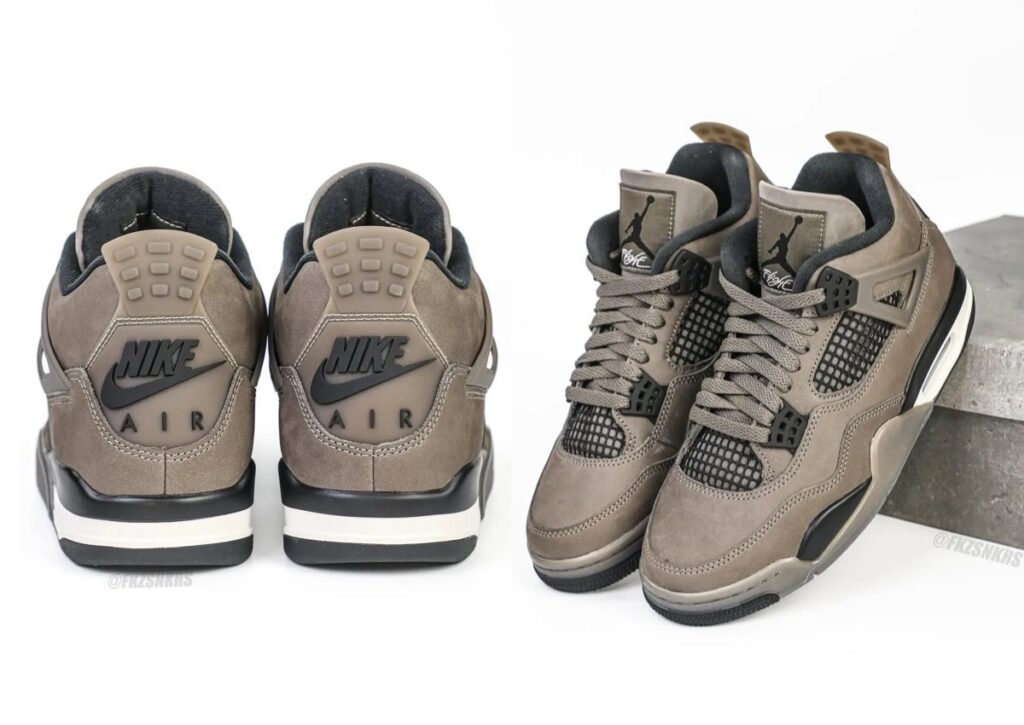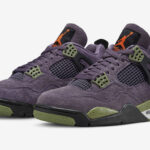“`html
Chasing the Air Jordan 4 Cave Stone: A Price Comparison and Deal Hunter’s Guide
The Air Jordan 4 ‘Cave Stone’ (often associated or referred to as the ‘Craft Medium Olive’ due to similar aesthetics or regional naming conventions) is a sought-after iteration of the iconic silhouette, known for its premium materials and unique color palette. When hunting for a pair, savvy buyers know that comparing prices from different sources is crucial for sneakerheads looking to get the best value for their money, especially for popular releases like the Air Jordan 4. This guide will help you navigate the market for this stylish sneaker.
Retailer Comparison: The Starting Line
The original retail price for Air Jordan 4s like the ‘Cave Stone’ (or similar Craft editions) is typically around $210-$225 USD.
These sneakers are usually released through:
- Nike.com / SNKRS App
- Major footwear retailers (e.g., Foot Locker, Finish Line, JD Sports)
- Select boutique sneaker stores
However, due to extremely high demand and limited stock, Air Jordan 4s like the ‘Cave Stone’ sell out almost instantly at retail. Finding them at their original price long after the release date is highly unlikely. Therefore, the primary marketplace you’ll encounter is the resale market.
Resale Market Analysis: Where the Hunt Heats Up
The resale market is where most buyers will find the Air Jordan 4 ‘Cave Stone’ today. Prices here are dictated by supply, demand, shoe size, and condition. Expect to pay a premium over the original retail price.
Here’s a look at typical price ranges on popular resale platforms (Note: Prices are estimates, fluctuate frequently, and vary significantly by size and condition. Check platforms for real-time pricing.):
StockX:
- Prices generally range from approximately $230 to $400+ USD.
- Prices are heavily dependent on shoe size; less common or highly popular sizes can be more expensive.
- StockX includes an authentication process, adding a layer of security. Fees (processing, shipping) will be added to the final price.
GOAT:
- Similar to StockX, prices for new pairs often range from $240 to $410+ USD.
- GOAT also lists pre-owned pairs, which can offer savings if you’re open to sneakers that aren’t brand new.
- Authentication is part of their service. Fees will also apply.
eBay:
- Prices can vary more widely, potentially from $200 (use extreme caution) to $500+ USD.
- eBay has an “Authenticity Guarantee” program for many sneakers, where eligible shoes are sent to an authenticator before reaching you. Look for this badge.
- Without the guarantee, buy from sellers with high ratings and clear photos. The risk of fakes can be higher if not using the guarantee service.
Factors Affecting Resale Prices:
- Hype and Exclusivity: The perceived “coolness” and limited availability drive up prices.
- Shoe Size: Very small or very large sizes, and highly common sizes, can sometimes command different price points.
- Condition: “Deadstock” (brand new, unworn, in original box) commands the highest prices. Used pairs will be cheaper.
- Seller Reputation: Established sellers with good feedback may price slightly higher.
- Market Fluctuations: Prices can change daily based on demand and supply shifts.
Tips for Finding Deals (and Avoiding Scams)
- Compare Across Platforms: Don’t settle for the first price you see. Check StockX, GOAT, eBay, and even reputable sneaker consignment shops.
- Set Price Alerts: Some platforms allow you to set alerts for when a sneaker in your size hits a specific price point or drops in price.
- Consider “Used” or “New With Defects”: If you don’t mind a shoe that’s been lightly worn or has a minor box imperfection, you can often find significant savings on platforms like GOAT or eBay. Ensure the seller is reputable and photos are clear.
- Follow Sneaker Accounts: Reputable sneaker news accounts on social media sometimes share information on restocks (rare for older releases) or deals.
- Be Patient (If Possible): Sometimes, prices can dip slightly a few months after initial release hype dies down, though this isn’t always the case for popular Jordans.
- Beware of “Too Good To Be True”: If a price is significantly lower than all other reputable sources, it’s highly likely a scam or a counterfeit product.
- Check Seller Reviews: On platforms like eBay, always check seller ratings and read reviews before purchasing.
- Understand Fees: Factor in authentication fees, processing fees, and shipping costs when comparing final prices.
Authenticity Guide: How to Spot Fake Air Jordan 4s
Ensuring you’re buying an authentic pair of Air Jordan 4 ‘Cave Stone’ sneakers is crucial, especially when navigating the resale market. Here are some general tips for spotting fakes (it’s always best to compare with known authentic pairs if possible):
- Box and Label:
- The box should be sturdy, with correct branding, colors, and font on the label.
- Check the SKU/style code on the box label and ensure it matches the code on the shoe’s internal tag.
- Misspellings, poor print quality, or flimsy boxes are red flags.
- Stitching Quality:
- Authentic Air Jordans have neat, consistent, and high-quality stitching throughout the shoe.
- Sloppy, uneven, frayed, or double stitching in odd places can indicate a fake.
- Material Quality:
- Genuine Air Jordan 4s use premium materials (leather, suede, nubuck, mesh). They should feel substantial and high-quality.
- Fakes often use cheaper, plastic-feeling materials that may have a strong chemical smell.
- Shape and Proportions:
- Familiarize yourself with the correct silhouette of an Air Jordan 4. Pay attention to the toe box shape (not too bulky or too slim), the height of the tongue, and the angle of the heel.
- Fakes often get these proportions wrong. The “netting” on the sides should also be well-defined.
- Jumpman Logo:
- Examine the Jumpman logo on the tongue and heel (if applicable).
- On authentic pairs, the Jumpman should have clear definition, proper proportions (e.g., fingers, shoelaces on his shoes), and no “potbelly” or overly thick limbs.
- The flight script below the Jumpman on the tongue should be cleanly embroidered.
- Tongue Tag Details:
- The tag on the reverse of the tongue should have crisp, clear lettering. The “AIR JORDAN” text should be well-defined.
- Sole Details:
- Check the outsole pattern and the Jumpman logo or Nike Air branding on the sole. The quality of the mold and paint application should be high.
- Smell Test:
- Authentic sneakers have a distinct smell of new materials and adhesives. Fakes often have an overpowering, unpleasant chemical or glue smell.
- Purchase from Reputable Sources:
- Using platforms with authentication services (StockX, GOAT, eBay’s Authenticity Guarantee) significantly reduces the risk of buying fakes.
Conclusion: Your Path to the Cave Stone
So, getting these Air Jordan 4 “Cave Stone” shoes means you need to look around. They cost a good bit of money, more than in regular stores, because many people want them. Make sure you buy real ones, not fakes, by checking things like the box and how they are made. Look at different online shops like StockX or GOAT to find a good price. It’s smart to be careful and find the best deal for these cool shoes so you don’t pay too much.
“`



